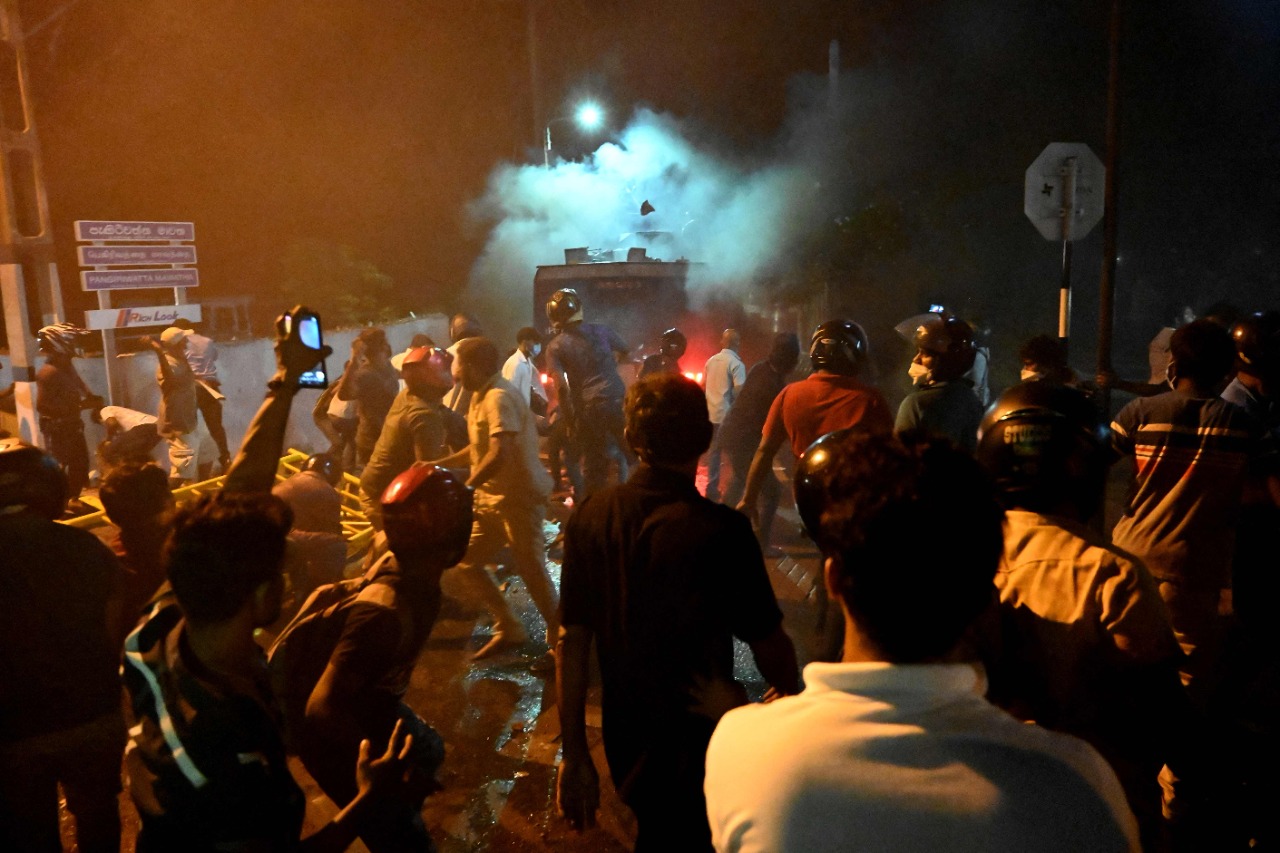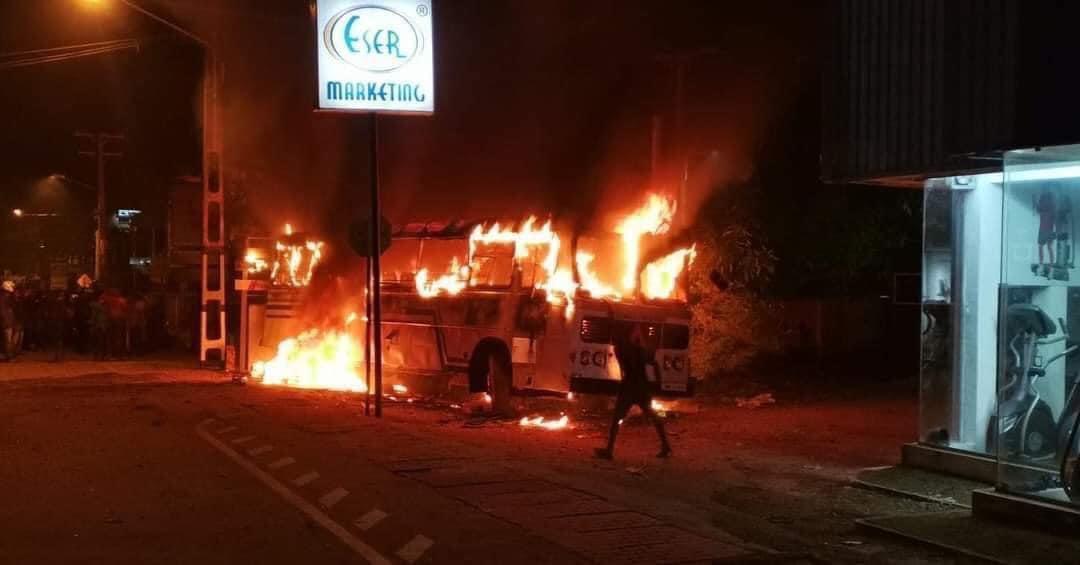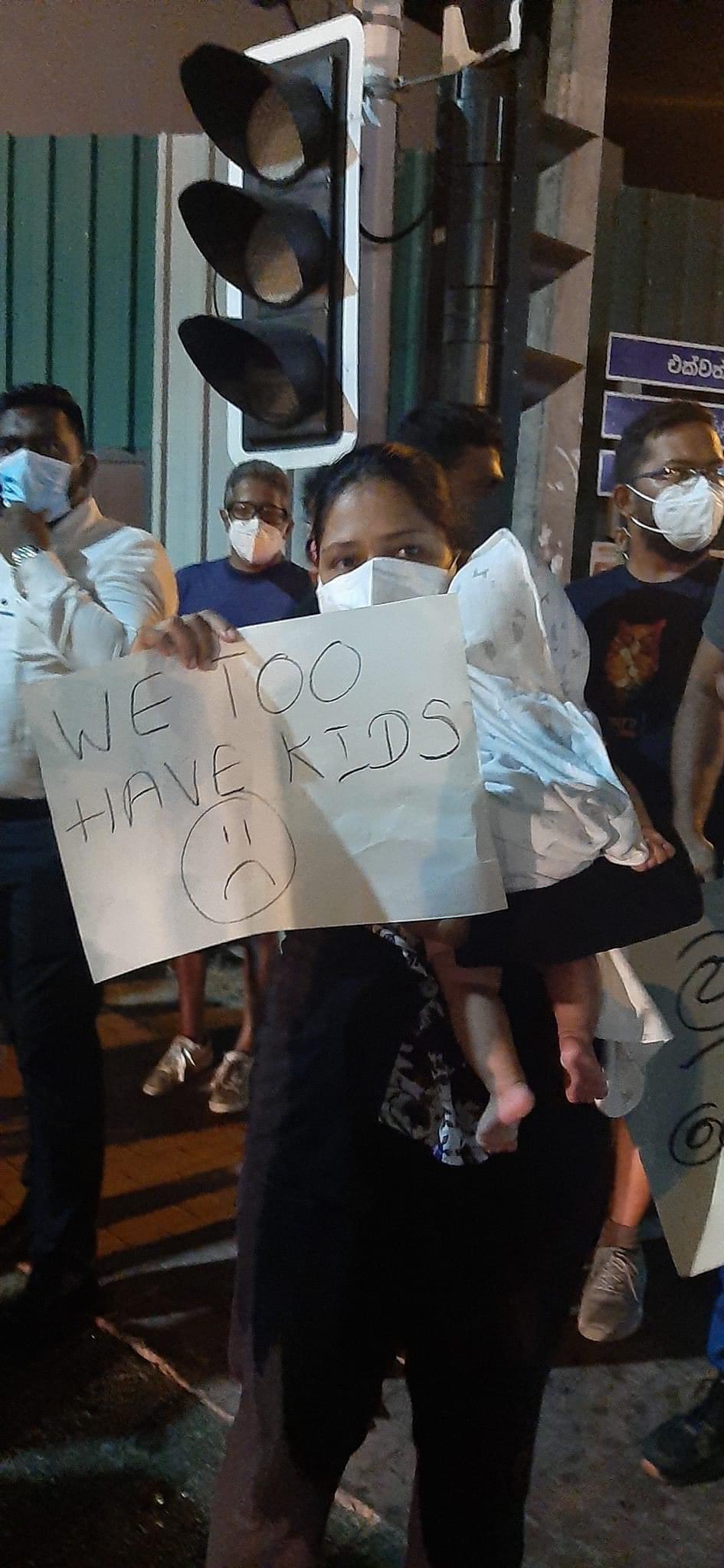A police curfew has been imposed across parts of Colombo today, as the military was called in to squash anti-government protests close to the president's residence earlier this evening.
Sri Lanka is currently facing its worst economic crisis in decades with routine power outages and shortages of essential items impacting the whole island.
Today the Ceylon Electricity Board (CEB) announced that it would impose a 13-hour power outage across many parts of the island, as diesel fuel ran out, severely impacting power generation across many plants. However, a list released by the Public Utilities Commission detailed 191 areas across the country where power cuts would not be implemented, the President's house being one of them.
Protestors march to Mirihana
Located in one of the few areas with power, Sri Lankan President Gotabaya Rajapaksa's residence became the focal point of protests. Hundreds marched the street chanting and gathering outside the home of the president. The protestors were relatively peaceful and the crowd mixed with mothers and children in the midst. The economic crisis has led to severe shortages of vital necessities across the island with milk sachets, fuel and medicine becoming increasingly hard to come by. Coupled with soaring inflation, the cost of living has increased drastically for those living across the island.
As more protestors gathered outside the road leading to the Sri Lankan president's residence, police began to set up barriers blocking the entrance to the road. The numbers continued to swell, with anti-Rajapaksa slogans being chanted on the roadside. Despite the sudden internet outage, the number of protesters voicing their discontent outside the Rajapaksa residence grew. The demonstrators reportedly stopped bus loads of Sri Lankan security forces from entering the road leading up the president's home, forcing them to turn around.
.jpg)
Tear gas and water cannons deployed
As the number of protestors began to increase, the notorious Special Task Force (STF) was deployed alongside increased police personnel.
The STF were sent in with their batons drawn to disperse the thousands of protestors. Alongside this escalation of force by the Sri Lankan state, tear gas and water cannons were used against the crowd without warning. The state forces had initially thought they had dispersed the crowd but angered by the escalation of violence, protestors began to retaliate by throwing rocks at police vans.

BREAKING - Protestors pelt police van with rocks after water cannons and tear gas deployed
Read more https://t.co/Q4iXUBMhDv pic.twitter.com/GmymyzQA2B
— Tamil Guardian (@TamilGuardian) March 31, 2022
As anger increased a bus was set on fire and protests began to erupt across different areas of the city, with roads being blocked by bonfires.
BREAKING - Bus set on fire as protests rage outside Gotabaya Rajapaksa's residence
Read more https://t.co/1BX5N94S0Q pic.twitter.com/pQZfNdwXhp
— Tamil Guardian (@TamilGuardian) March 31, 2022
The roads were soon lit, not by street lights, but by burning vehicles on the night of the 'longest' power outage so far during this island's economic crisis. Tamil activists were quick to note that parts of the island had gone through longer outages. Jaffna had been with power only for one hour during long periods during the armed conflict and had no access to electric generation for six years after the Sri Lankan state bombed the Chunnakam power station.
Colombo was stricken with panic, curfews were imposed across different regions by Colombo North, Colombo South, Colombo Central and Nugegoda Police Divisions before the Inspector General of Police announced an indefinite curfew across the whole city. The protest had been raging for more than seven hours before curfews had been imposed. Several protestors were hospitalised following clashes with the STF, who had now been deployed with automatic machine guns instead of batons.
See more photos below.
.jpg)
.jpeg)
.jpeg)
.jpeg)
We need your support
Sri Lanka is one of the most dangerous places in the world to be a journalist. Tamil journalists are particularly at threat, with at least 41 media workers known to have been killed by the Sri Lankan state or its paramilitaries during and after the armed conflict.
Despite the risks, our team on the ground remain committed to providing detailed and accurate reporting of developments in the Tamil homeland, across the island and around the world, as well as providing expert analysis and insight from the Tamil point of view
We need your support in keeping our journalism going. Support our work today.
For more ways to donate visit https://donate.tamilguardian.com.



